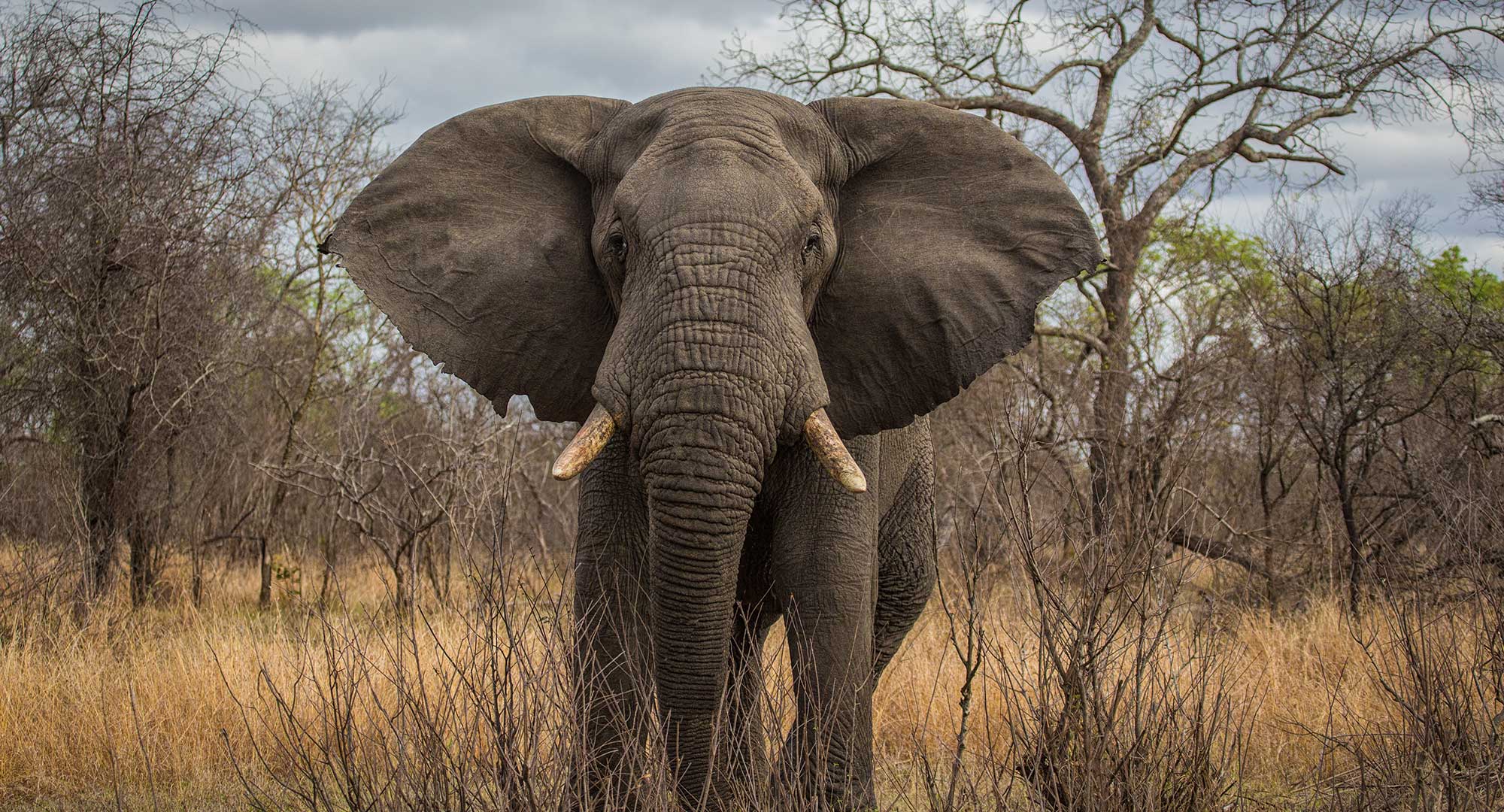- 1300 761 980

About
The largest land mammal on Earth, African elephants are both incredible and improbable looking creatures, with their large flapping ears, elongated trunks and menacing tusks. However, elephants are the gentle giant of Africa. They are enormous- weighing up to eight tonnes and growing as tall as four metres.
One of their most recognisable features (aside from their size) are their tusks, which are actually their upper incisors and grow throughout their lives. They have six rows of teeth, each row wearing down every ten years. This means most elephants only lives till they are sixty, and you will always find old elephants near marshes as they can only eat the soft wet grasses nearby.
These captivating animals are unlike any other and have some awesome quirks. Their long trunks can pick up objects, communicate with other elephants, drink water and even act as a snorkel- just to name a few things! Their large ears also enable them to cool down more easily. Furthermore, supplying their intelligence are their enormous brains, weighing up to 5kg. As you would expect, it takes time to produce such an incredible animal- elephants’ gestation periods last for 22 months!
Habitat & Diet
You are probably familiar with Asian and African elephants, but did you know the African elephant actually has two subspecies? They are the savannah and forest elephant, both differing in habitat and physical appearance. Elusive forest elephants are smaller than their savannah-dwelling counterparts and have a downward curve in their tusks. Whilst they are usually found in central and western Africa, their larger savannah cousins can be found in greater numbers on the African plains of Eastern and Southern Africa.
When it comes to eating, elephants do not fancy themselves connoisseurs- they’ll eat pretty much anything. As herbivores, they don’t eat meat, but they will eat pretty much anything else, whether it be twigs, grass, leaves or bark. They spend 12-18 hours per day on eating alone, consuming as much as 300 kilograms of food. Their cravings do not end there however, elephants can also drink as much as 200 litres a day. That is the equivalent of an entire bathtub!
The Elephant Herd
Elephants are intelligent creatures, and the social mechanisms of their herds are just as, if not more, intricate. Led by a matriarch, packs can be as large as 50 elephants and consist of female offspring and relatives, including juvenile males and females. The strength and unity of the herd depends largely on the leadership of the matriarch. A strong herd is important, especially during childbirth. Other members provide support for the mother and when it is born, the young elephant can find shelter and defense from attackers.
Male elephants, known as bulls, are seen as usually solitary from the time they reach adolescence. Whilst occasionally interacting with other bulls to learn or fight, they are typically loners that only engage with herds when the females are in mating season, known as estrus.
Threats to Survival
Poaching always has been and continues to be the biggest threat to the African elephant’s survival. A century ago there was an estimated 12 million African elephants and today there are 400,000. An estimated 20,000 elephants are killed every year. Despite banning ivory trade in many countries, elephants continue to be killed for their tusks.
Elephants also face several other threats to their survival, such as decimation of natural habitat and human-elephant conflict. Between the years of 2007 and 2014, elephants lost 30% of their geographical range and their population declined 62%. The conflict between farmers and elephants is a continuous cycle with the growth of urbanisation and loss of habitat.
As a keystone species that supports other wildlife and retains balance of natural environments, elephants are integral to the ecosystem. The continual decline of this breathtaking species must be prevented. In order to find out how you can support, visit websites such as www.worldwildlife.org or support causes such as the Sheldrick Trust.
Suite 2, 1st Floor
261-271 Wattletree Rd
Malvern VIC 3144



For tailor-made itineraries or enquiries…